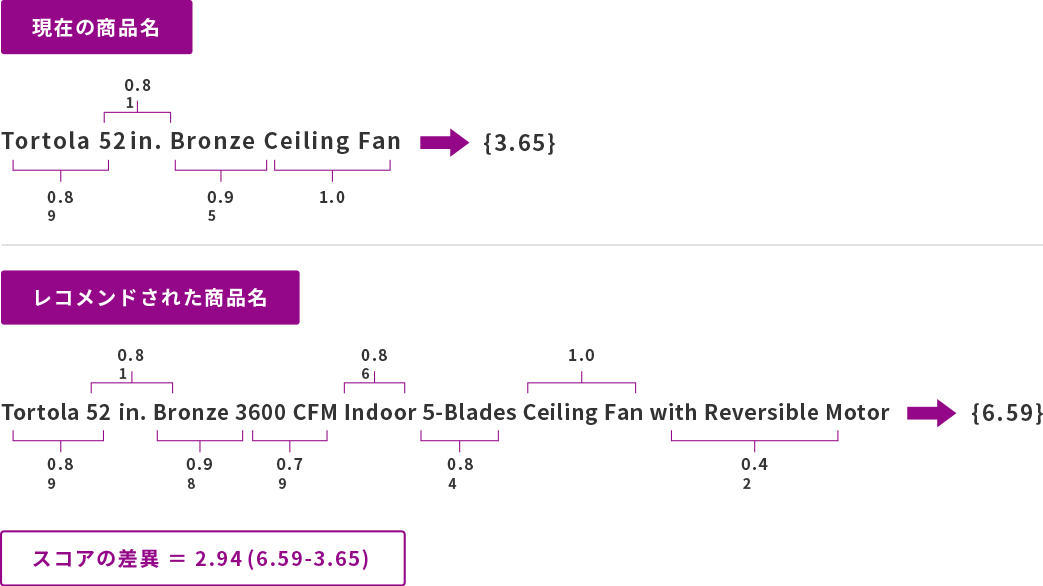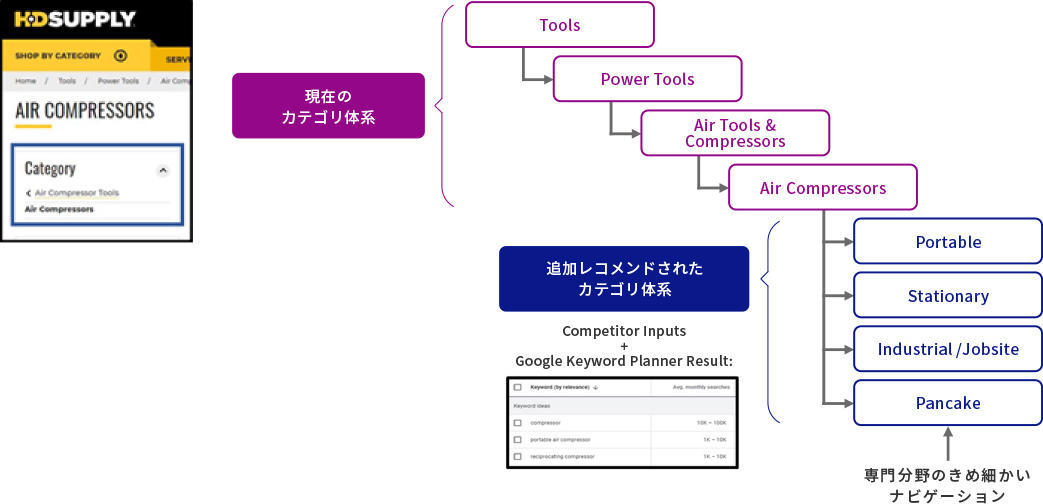Improved searchability of EC sites
- AI that recommends appropriate product pages
- Realizing the construction of an EC site that improves the searchability of customers and finds the products they really want
- Lead to proper purchase of own products, avoid loss of sales opportunities and improve sales
- EC
- Improved searchability
- Increased sales
- data
- CrowdANALYTIX
Business challenge
On your own EC site, if you can't present the search results of products that are appropriate for the customer's search, it will lead to the loss of sales opportunities. If this situation continues, customers may switch to other companies' sites for purchases due to a decline in customer satisfaction, leading to an outflow of the customer base.
As one of the solutions to this problem, it is necessary to improve the searchability of the EC site by capturing the customer's search intention and updating the product name, product category, etc. on the product page to match the needs. .
AI analyzes the data and recommends appropriate product names, product categories, etc., aiming to build an EC site that leads to conversion.
Task
When operating an EC site, improving the searchability of customers has a great impact on the increase in sales of the EC site. This is because even if you search for the product you want, if the search results are zero or the wrong product appears, there is a high possibility that the search and purchase will flow to another company's site. For example, suppose that when searching for "glasses", many eyeglass cases are included in the search results. This is because the eyeglass case has a description of "glasses" in the item description, and the search results are displayed with reference to the keyword. In this case, customers who search for eyeglasses are not looking for eyeglass cases, so it becomes difficult for customers to find the products they really want, leading to customer dissatisfaction that they cannot find what they want.
If dissatisfaction with searchability continues as described above, there is a high possibility that it will lead to loss of sales opportunities and loss of customers. However, as EC staff are busy with their daily work, after building an EC site once, There are many cases where actions are not taken to grasp, analyze, and improve the situation, such as whether search results that match customer needs are presented. In addition, there are many cases in which they say that they do not have enough time to think about what to improve.
Even if there is a product that the customer wants on the site, the search keyword may not necessarily be included in the product name or product description on the current site. In addition, customer search keywords are easily influenced by trends and are not constant. As the number of products handled by e-commerce sites increases, it is necessary not only to post the product information acquired from suppliers and the company as it is, but also to continuously fine-tune the product names and product categories.
Therefore, we aim to improve sales and customer satisfaction by connecting customer searches to appropriate in-house product purchases and avoiding lost sales opportunities. Introduction of AI that analyzes and recommends what kind of product name and product category structure should be based on various data decided to consider.
Problem-solving process
In order to solve the above problems, we started to consider the use of AI with the goal of setting an appropriate product name.
There are two main types of data used: in-house data and external data.
・In-house data
(1) Product data: product name, description, web hierarchy, product ID, image (2) Category-specific attributes (3) Current category classification system (4) Search logs within the company's website
・External data
1) Google AdWords: keyword planner and trends mapped to understand consumer searches for product categories 2) Category mapping using competitor breadcrumbs 3) Attribute and weighting taxonomy by CrowdANALYTIX
real project
In an actual project, multiple arbitrary categories can be selected as POC targets. AI presents an attribute score that weights the importance of each attribute item in each category. After that, for each product, the recommended product name is recommended along with the score. The score of the current product name was compared, and finally, the EC staff decided to change the product name from the one with the largest difference, and reflected it on the EC site.
1) AI presents a score weighted by importance
Weighting for each attribute item
| Attribute Name | Attribute Weights |
|---|---|
| Product Type | 1 |
| Fixture Color/Finish | 0.9892 |
| MFG Brand Name | 0.9569 |
| Series | 0.8909 |
| Indoor/Outdoor | 0.855 |
| Number of Blades | 0.8457 |
| Ceiling Fan Width (in.) | 0.8105 |
| Attribute Name | Attribute Weights |
|---|---|
| Airflow (CFM) | 0.7904 |
| Control Type Included | 0.7222 |
| MFG Model # | 0.5068 |
| Features | 0.4293 |
| Blade Color | 0.2879 |
| Motor Speed (RPM) | 0.2326 |
| Mounting type | 0.0043 |
2) For each product, recommend the desired product name along with the score, and compare it with the score of the current product name.
Product name recommendation

3) The EC staff decides and implements the change of the product name
4) Reflection on the EC site
After that, AB test is performed in any category targeted for POC. We were able to confirm that the products whose names were changed to those recommended by AI had improved sales compared to the past compared to the products that had not been changed. Currently, we are expanding the target categories and using this product name recommendation AI continuously.
Also, in order to improve the searchability of the EC site, we have started a new study on the recommendation AI of not only the product name but also the product category system and landing page.
AI does not end once it is developed. Macnica and CrowdANALYTIX communicate closely with customers on a daily basis to understand issues and provide AI model development, operation, and accuracy maintenance as a service, in line with new products and additions and updates of in-house/external data that serve as input. ing.
Recommendations for product categories and landing pages

